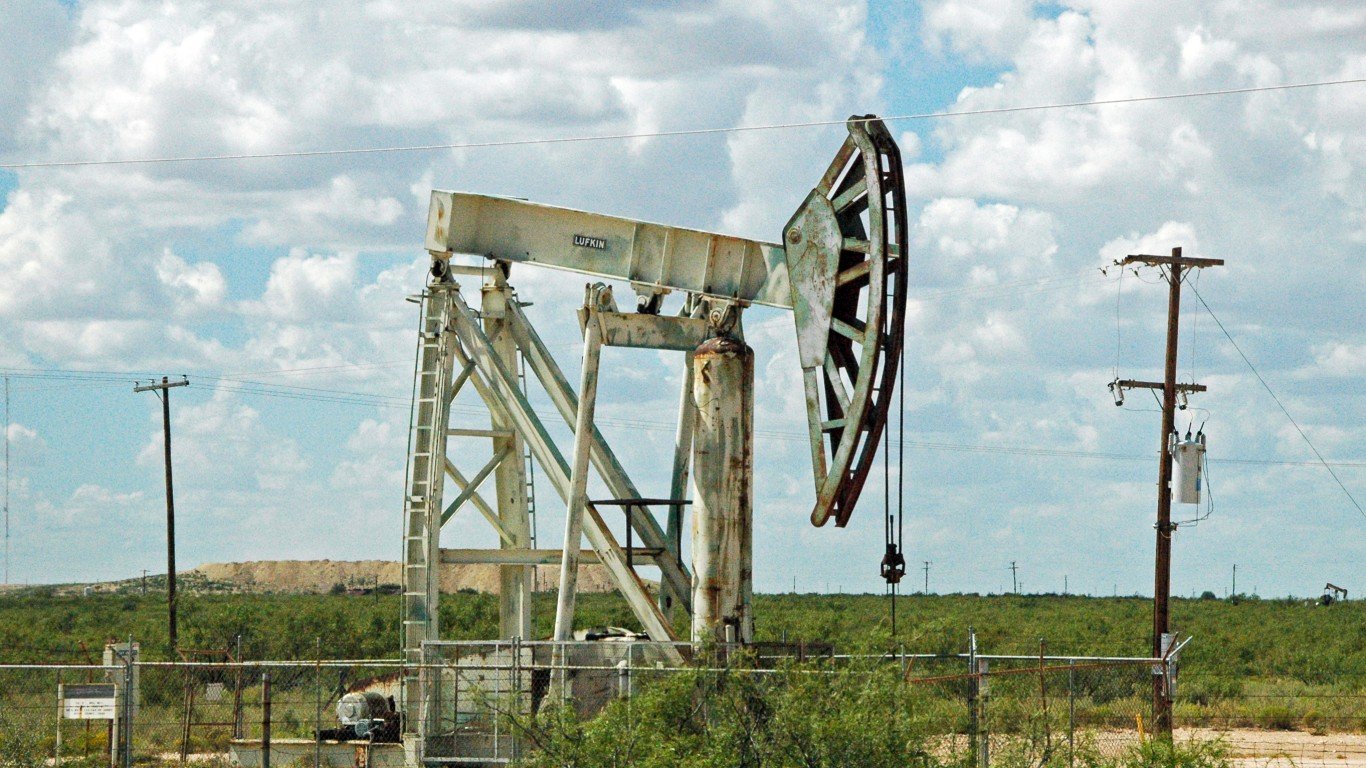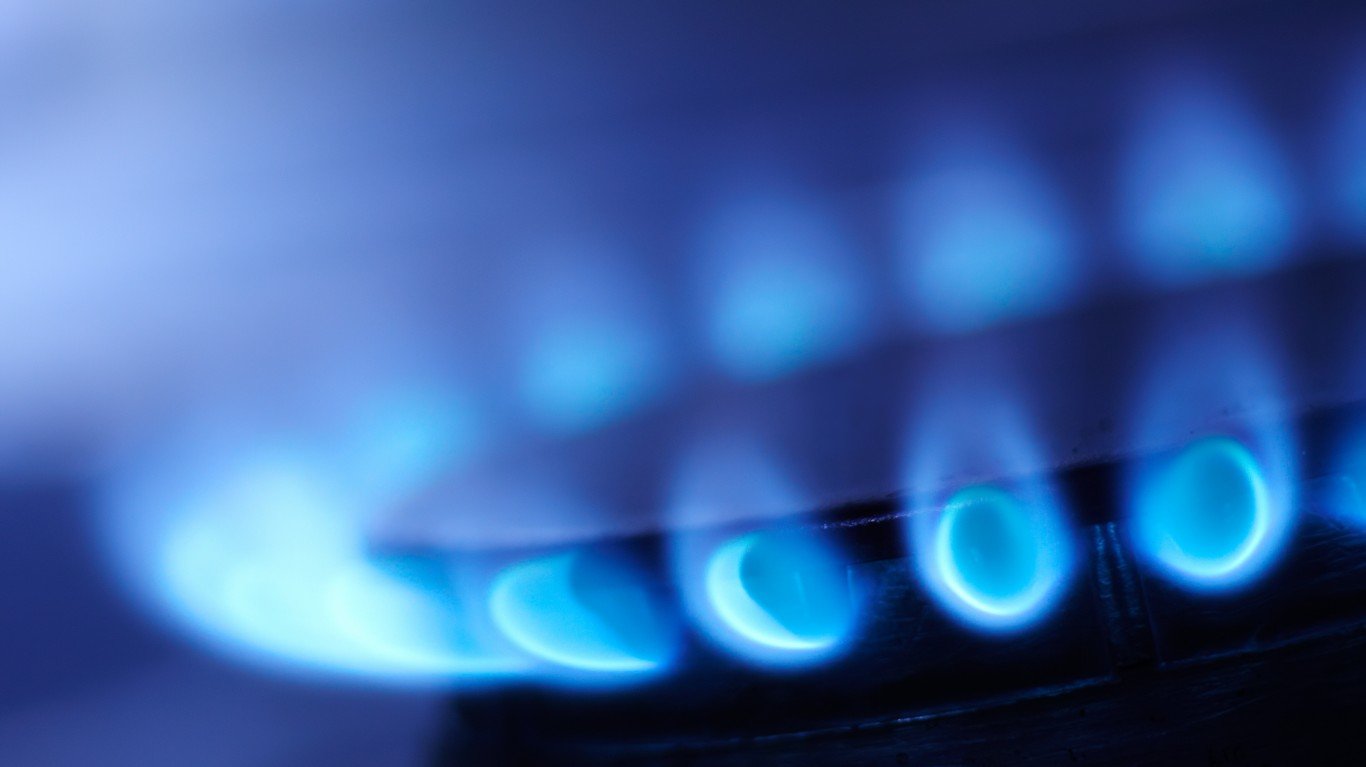

Share price appreciation and higher dividends are two highly visible ways to judge the value of the stocks in investors’ portfolios. They often indicate, among other things, whether investors can expect to see more of the same in the future.
[in-text-ad]
Given today’s hot economy, inflationary pressures and rising interest rates, investors have been wary about taking a flyer on growth stocks and have been more interested in companies that pay solid dividends and promise to pay even more down the road.
In a recent review of energy stocks that offer the promise of higher rewards to investors willing to take on a bit more risk, Goldman Sachs analysts identified eight stocks that could return 19% to 49% total returns to shareholders over the next year. We looked on Thursday at five of those stocks and Goldman Sachs’s rationale for recommending them. Here, we look at the other three, two of which could return more than 40% to shareholders through a combination of dividends, share buybacks and debt reduction.
Ovintiv
Denver-based Ovintiv Inc. (NYSE: OVV), formerly known as Encana, produces oil and gas in Canada and the United States. When the company reported first-quarter results earlier this month, it lowered production guidance slightly and raised guidance on costs and capital spending to account for rising commodity prices, higher labor costs and royalty payments. Investors were not amused.
In Goldman Sachs’s view, Ovintiv de-risked its fiscal 2022 outlook and offers a substantial free cash flow yield of 28% for 2022 and 43% for 2023 compared with peer-average yields of 19% and 18% for the same years. The company also should have reduced its net debt from $4.5 billion at the end of the first quarter to $3 billion by the end of the third quarter. That reduction, analyst says, “will be able to support higher [free cash flow] after base dividend allocation (50%+ starting in 4Q22 vs. 25% currently) towards capital returns (including share repurchases).”
The firm’s 12-month price target of $73 per share implies an upside of 49% and a lower discount relative to its peers. Risks to that outlook include costs, well results, commodity price volatility and government pronouncements.
Diamondback Energy
Diamondback Energy Inc. (NASDAQ: FANG) is based in Midland, Texas, and it produces oil and natural gas from its properties in the Permian Basin. The stock has underperformed relative to peers (up 35% versus 54% for large-cap peers like Continental Resources, Devon and Pioneer) because investors would like more information about Diamondback’s plan for allocating its now-abundant free cash flow.
Investors also are worried that the company is seeking a large acquisition that will slow its share repurchases even further. Diamondback has tried to calm those worries by reiterating its commitment to return 50% or more of its free cash flow through fixed and variable dividends rather than share buybacks. Since the beginning of the year, the company has spent more than $800 million to acquire more Permian acreage and to purchase the ownership interests it did not already own in Rattler Midstream.
[in-text-ad]
Diamondback’s capital return plans for 2022 and 2023 imply the return of 58% and 65% of free cash flow to investors in the two years. Goldman Sachs analysts believe there is “potential for the company to increase its [free cash flow] allocation above its minimum threshold of 50% towards capital returns, which can serve as a catalyst for share outperformance.”
The analysts’ 12-month price target on the stock is $180, yielding a total return for shareholders of 44%. Risks to that forecast include costs, well results, commodity price volatility and government pronouncements.
Imperial Oil
Calgary-based Imperial Oil trades on the Toronto Exchange under the ticker IMO. The oil sands miner is controlled by Exxon Mobil Corp. (NYSE: XOM), which owns almost 70% of the company’s shares. The company has forecast production of 265,000 to 270,000 barrels a day for 2022, higher than the Goldman Sachs estimate of around 250,000 barrels. Imperial could surprise to the upside, the analysts commented, particularly in the second half of the year.
Thank you for reading! Have some feedback for us?
Contact the 24/7 Wall St. editorial team.
 24/7 Wall St.
24/7 Wall St. 24/7 Wall St.
24/7 Wall St.


